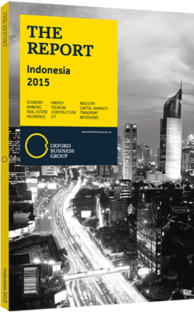Jahja Setiaatmadja, CEO, Bank BCA: Interview

Interview: Jahja Setiaatmadja
How might the lack of liquidity affect Indonesia’s GDP growth moving forward?
JAHJA SETIAATMADJA: This is a very important issue at this particular moment for Indonesia’s banking sector. We have to keep a close eye on the level of liquidity because it is running short, and this can have a big impact on our whole economy. In fact, we are already seeing GDP growth levels being affected by the lack of liquidity. We are seeing numbers around 4.7%, which is far from the 7% President Joko Widodo claimed could be achieved. Higher GDP growth generally increases demand for imported products, which in times of low liquidity, is not necessarily a positive trend to follow. This is further exacerbated if exports do not increase, which is the case now in Indonesia. This is why the government is aiming at containing GDP growth levels at rates that are manageable.
A 7% growth rate would indeed be remarkable, but we need to be aware first of all of the resources available to achieve this target and also the effects of higher growth rates. Too much growth is not always positive. What Indonesia needs, at the moment, is for more investors to come and invest in the country, especially for export goods, bringing in much needed liquidity to the market, creating more jobs and helping achieve higher growth rates. For this, we will need a clear and stable investment climate, which I believe is the direction that the government is taking.
How do you compare organic and inorganic growth opportunities in the banking sector?
SETIAATMADJA: If we talk purely about growing the business, it is preferable to do so by organic growth. This may include establishing new branches, reaching new potential customers, and developing more products and services to suit customers’ needs. The opportunities in Indonesia are tremendous. Meanwhile, inorganic growth is a long process that in many cases involves such tasks as downsizing staff, harmonising IT systems and restructuring branches, amongst others. That being said, it is true that Indonesia has far too many banks at the moment – approximately 119 in total – many of which do not have a strong capital base.
The local banking sector requires consolidation to reduce risks for smaller banks and to increase the muscle of the larger ones. In short, consolidation is needed because the market demands it, but not as a means for banks to grow. Regulations have been issued in this direction. The Financial Services Authority is requiring capital increases to encourage mergers and acquisitions. This would help them better supervise and monitor the local banking industry.
What opportunities is the ASEAN Economic Community creating for Indonesian banks?
SETIAATMADJA: This is more of a political matter, rather than a business opportunity. Indonesia’s top two or three banks should be able to expand operations in other countries within the ASEAN community. However, this does not necessarily have to be the case for all players. Despite what other banks might consider, we believe it is fundamental to strengthen our position in the domestic market before going abroad. This is mainly for two reasons.
First, we see that in Indonesia there are still opportunities for growth, with a large unbanked population, especially in remote areas in the east. This means that there is still much to be done at home. Net interest margins remain high, customer trust is already established and the challenges ahead are known. None of these factors is true of foreign markets. Therefore local banks would do well to continue expanding domestically, helping to improve the stability of the nation’s banking sector.
Second, the opportunities for foreign banks to expand in Indonesia will grow under the AEC, particularly for globally recognised banks. If we are not able to strengthen our presence locally, we might find ourselves competing with international banks.
You have reached the limit of premium articles you can view for free.
Choose from the options below to purchase print or digital editions of our Reports. You can also purchase a website subscription giving you unlimited access to all of our Reports online for 12 months.
If you have already purchased this Report or have a website subscription, please login to continue.

